A new era of Regent Hong Kong
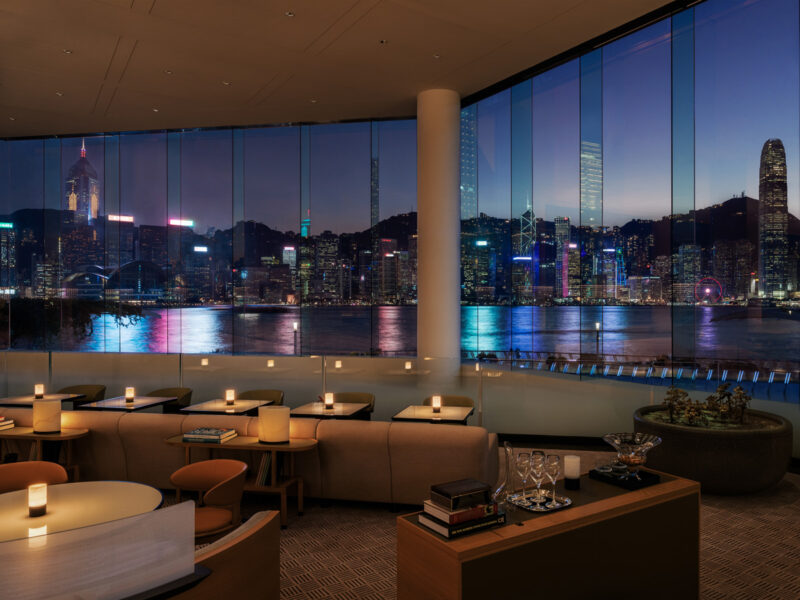

The reimagining of a legendary five-star hotel in Hong Kong is a balance between legacy and modernity symbolic of the city itself.
Seeing a human descend on a cable outside a skyscraper has a degree of eye-popping sensationalism to it even if you know it’s going to happen. The effect is heightened when the writhing figure is backdropped by the neon-reflected shimmer of Hong Kong’s Victoria Harbour and soundtracked by a tense operatic score.
A grand affair
I watch, mouth agape with cartoonish delight, as four figures fling their limbs about in a dramatic, choreographed acrobatic routine. Their empire-red garments catch the waterside breeze, emulating the flowing silk robes of inky figures on ancient Chinese scrolls.
The room is filled with designer-draped partygoers. There’s a collective inhale of astonishment, and carefully cultivated ‘oohs’ and ‘ahhs’ are released as the performance reaches its crescendo.
I am witnessing this spectacle having been cordially invited to a party designed to celebrate the reopening of one of the world’s most beloved hotels, Regent Hong Kong. I’ve attended a few hotel openings in my line of work and they are, without deviation to the rule, grand affairs. But this multi-day event is certifiably off the charts.
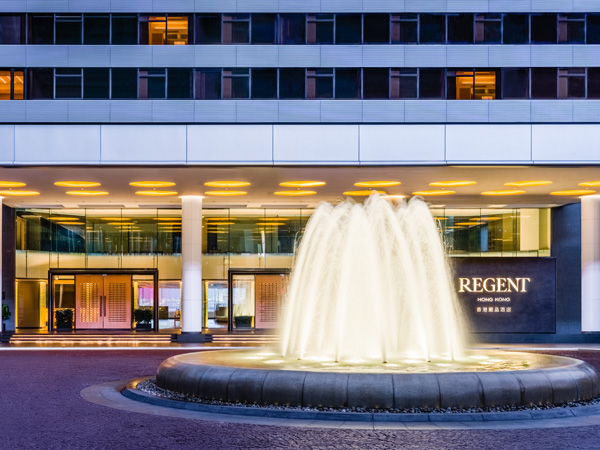
Experience five-star luxury at Regent Hong Kong. (Image: Courtesy Regent Hong Kong)
For starters, there was a harbour cruise on the city’s iconic junk boat Aqua Luna, which had its usual red sails replaced with the Regent-branded teal.
This was followed by a welcome dinner of astonishing abundance onsite at The Steak House, where the salad bar alone indulges almost every omnivorous whim you could conjure. And, since arriving one day ago, my consumption of Champagne and caviar has reached Russian oligarch levels.
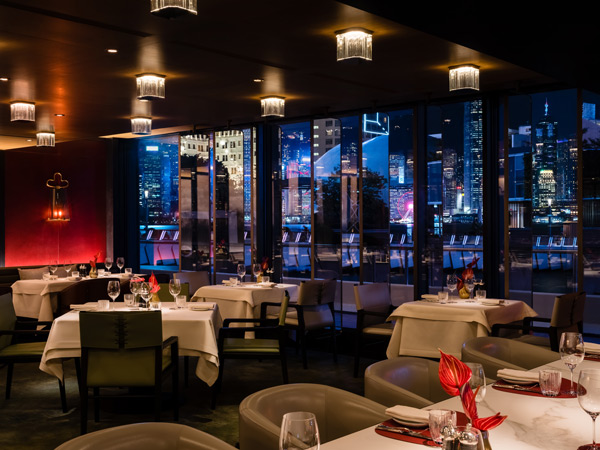
Stake out a spot at The Steak House.
One expects all stops to be pulled out when a hotel with such an enviable legacy emerges from a prolonged dormant state. But there’s something else going on here, too. It’s not simply the welcome return of the hotel brand’s Asian flagship; it also feels like a return of Hong Kong itself following years of lockdowns, political ambiguity, mother country pressures and economic upheaval.
In fact, ahead of my trip, I’d been met with plenty of those bared-teeth emojis, the one that conveys a ‘yikes!’ sentiment. Many people expressed concern for my welfare or at least the opinion that Hong Kong is not what it used to be. “It’s a shame what’s happened there,” they said. “We’ll see,” I replied, and set out to do just that.
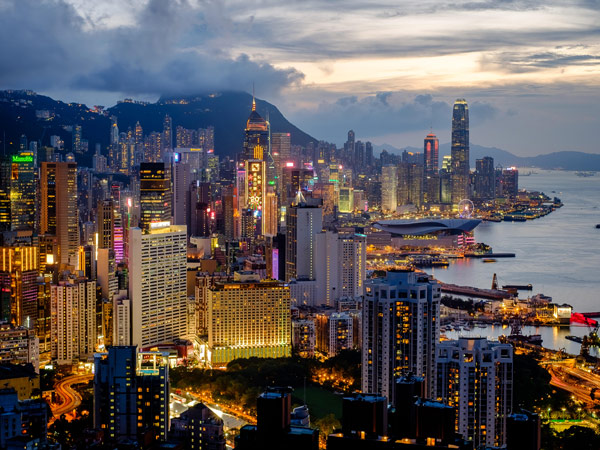
Watch the sun set over Hong Kong from Braemar Hill. (Image: Alamy/James Wong)
I have loved Hong Kong in the past and I love it still. And yes, I was at a five-star hotel launch and a complete outsider to any political encroaches. But I felt entirely unthreatened and utterly invigorated by the energy when I hit the streets of Tsim Sha Tsui and other Kowloon locales. It’s a little quieter than I remembered, but the city is no less diverting.
You couldn’t find a more fitting symbol to herald in a new era of the Pearl of the Orient than this ultra-luxe waterfront hotel. The Regent brand has always blended the cultures of British colonialism and Chinese identity with grace and produces something that looks forward without ignoring the past, welcoming all as it does so.
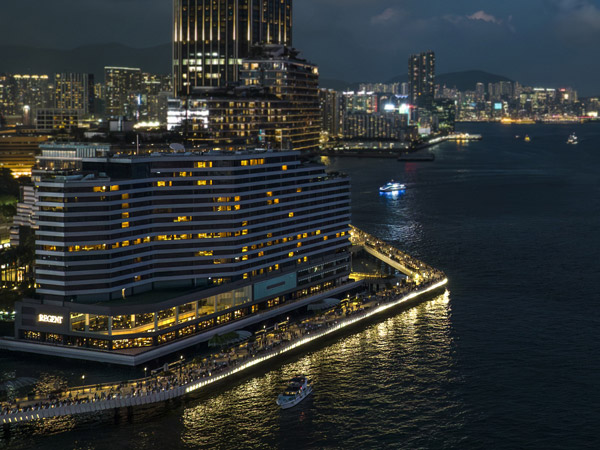
Regent Hong Kong has been given a new lease on life. (Image: Courtesy Regent Hong Kong)
How Regent Hong Kong is redefining luxury
To fully absorb the importance of its resurrection, a little context helps. Regent Hong Kong first opened in 1981 and from the outset was intended to unlock new levels of luxury in Asia.
While its past timeline doesn’t unfurl as extensively as Hong Kong’s famous Peninsula Hotel, which opened in 1928, or the Mandarin Oriental in 1963, Regent redefined high-end hotels in the region and beyond, being regarded as one of the best in the world at the time.
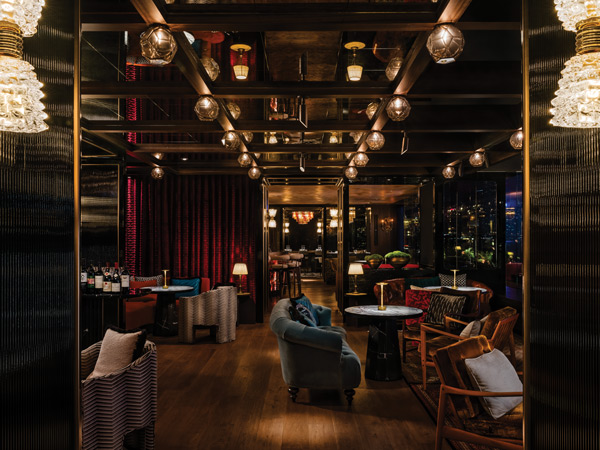
The hotel unlocks a new level of luxury in Asia. (Image: Courtesy Regent Hong Kong)
Aside from its covetable, absolute waterfront Victoria Harbour location in Kowloon, the place was set apart by Regent co-founder Robert H. Burns’ revolutionary approach to interiors, including ‘five-point bathrooms’ with separate shower and bath, and a no-chandelier policy to achieve a contemporary aesthetic.
Astonishingly, considering the ’80s preference for gilt edges, this hotel wasn’t about overt glitz, rather the location was to be the showpiece with the harbour and Hong Kong Island providing an ever-evolving artwork.
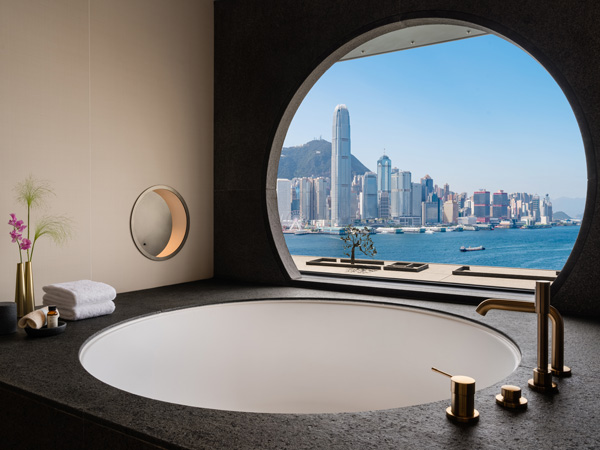
Look out over Hong Kong’s skyline from the bathroom.
Regent Hong Kong was thus swiftly allotted space in the hearts of locals and travellers alike. Its vast ballroom accessed by the white marble ‘Fred and Ginger’ staircase features in many Cantonese family photo albums, having been the venue of choice for generations of celebrations.
Side note: the gentle curve of the staircase and its soft allusions to Hollywood glamour has remained as a link between the old and new Regent. Now, though, the permanent red carpet that once cloaked the steps has been rolled away and, on the opening night gala, the polished stone gleams like whitened teeth, causing anxiety to those not proficient in stilettos (hand goes up).
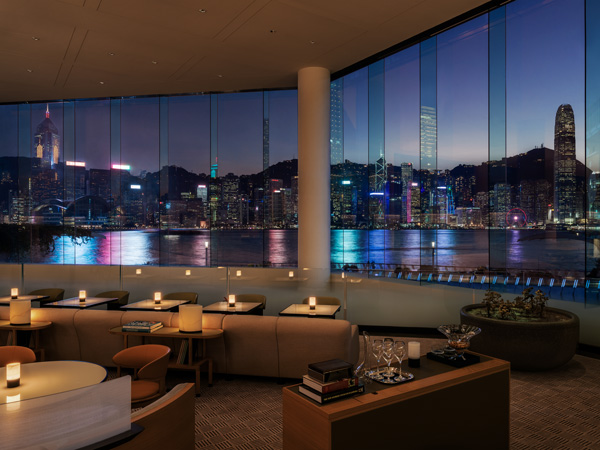
The hotel exudes luxury in every space.
After trading for 20 years, the hotel was sold in 2001, morphing into the InterContinental Hong Kong. Then 17 years and some corporate gymnastics later, Regent Hotels and Resorts was acquired by the InterContinental Group and the idea was seeded to return the beloved Regent to the people of Hong Kong.
Dovetailing with pandemic closures, the InterContinental closed for business and the building was cocooned to begin its rebirth as Regent 2.0. Enter hotel manager Michel Chertouh and his team who were tasked with finding an elegant balance between legacy and modern relevance. To help with that, Hong Kong-born, Milan-based architect Chi Wing Lo was enlisted to curate the transformation of the 497-room property.
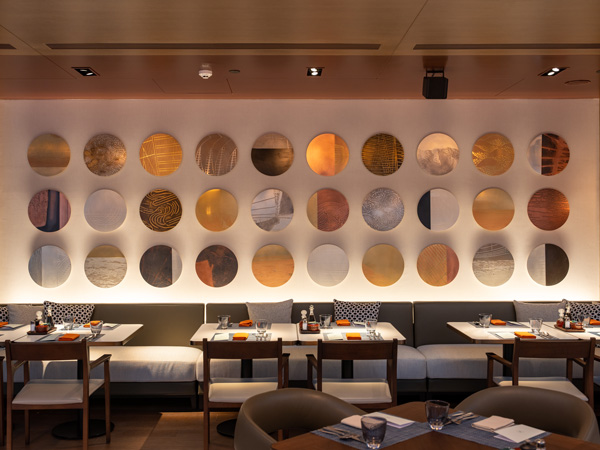
Unique design touches flourish at Regent Hong Kong.
The story behind the design
Lo is a Harvard-educated artisan with his own furniture atelier, Dimensione Chi Wing Lo, in Milan. He fondly remembers the Regent from his Hong Kong upbringing as the location of choice for auspicious gatherings. And while he’s not lived in the region for years, his beautifully minimal aesthetic is folded with an inherent Chinese sensibility, representing the ideal tool with which to smooth the edges between old and new.
Dressed immaculately in white linen and holding court with his calm quietude and relaxed generosity, Lo explains his approach as we tour the palatial, two-storey Presidential Suite the morning after the opening gala (cue more Champagne and caviar and influencers jostling for space on the outdoor terrace).

The Presidential Suite is regarded as one of the best rooftop penthouses in the world. (Image: Courtesy Regent Hong Kong)
The brief Lo was given stipulated the use of a Forbidden City colour scheme (think plenty of red), perhaps to represent a clear signpost of Hong Kong’s future. But, smiling knowingly, he said, “No, I’m not doing that” with the air of a master who understands a nuance you can’t hope to perceive.
And he did not. Instead, the interiors are carefully restrained and intentionally muted. But there is no missing the cultivation of a contemporary Cantonese aesthetic.
“The spirit of culture is much deeper than a surface colour,” says Lo. He selected a minimal palette, believing instead that you, the guest, bring the colour, with the room simply a backdrop. “You have to look in your heart and present what you believe. I asked them to believe what I believe,” he says of his client.
Looking around at the clean lines, meticulous but spare details and soothing tones, his belief was clearly persuasive. That’s not to say obvious Forbidden City motifs aren’t present. Indeed, each room has a metal-studded, castle-style door. Wooden screens and ceramics feature throughout. And Chinese forms are braided into a design that is wonderfully calming, highly functional and ultimately timeless.
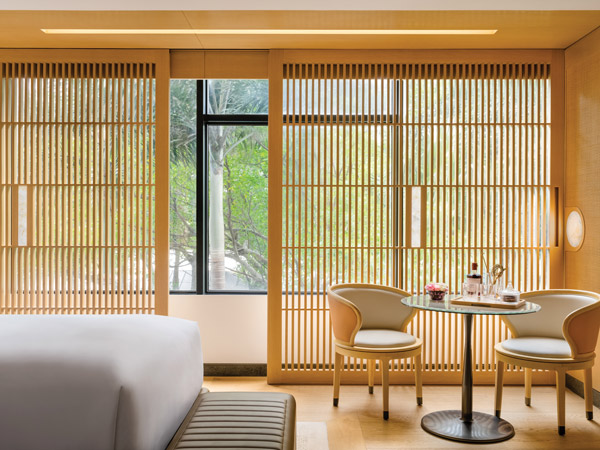
Wooden screens add a sense of privacy to rooms. (Image: Courtesy Regent Hong Kong)
Lo speaks of a formula made up of quietude, decadence and function, which he used to furnish the Regent to great effect. He wanted to create a restful haven from the frenetic thrills of the city beyond. Because the bones of the building couldn’t be altered too much, it was important to give a sense of space and this was achieved by ensuring much of the furniture ‘floats’ rather than being anchored on the ground.
He kept those five-point bathrooms vast and indulgent, but repositioned everything to hero that most absorbing of harbour views, including luxurious window-seat day beds.
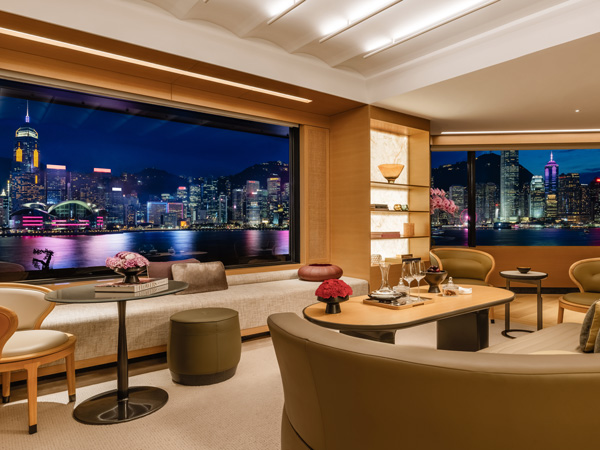
The hotel’s expansive Corner Suite has killer views over Victoria Harbour. (Image: Courtesy Regent Hong Kong)
Delicately selected artworks feature throughout the hotel, echoing former glories and celebrating new approaches. There’s the lobby’s grand Golden Illusion installation inspired by Liu Li glass art, which filters golden light through 16 floor-to-ceiling glass brick panels like a vertical chandelier.
And the tranquil bronze Drizzle sculpture of a lotus pond in rain. The Spirit of Regent Retrospective montage, on display in the lobby, is a piece that honours the original Regent’s art collection presented in a contemporary digital format.
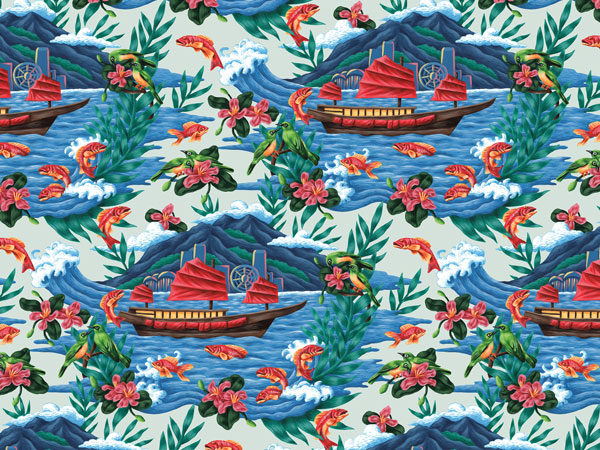
A Legend Reborn hand-painted artwork for Regent Hong Kong. (Image: Saddo)
For Lo, spaces, people and ideas have been woven together to create this new Regent. As I pan the colour in the room brought by the invited guests on opening night, his intent is revealed in startling clarity. The interiors needn’t speak for everyone or to anything, they need only provide a stage for Hong Kong’s spirit to dance upon. And in the absence of competing colour, the billowing garb of the acrobats outside unmistakably recalls the hue of the Forbidden City.
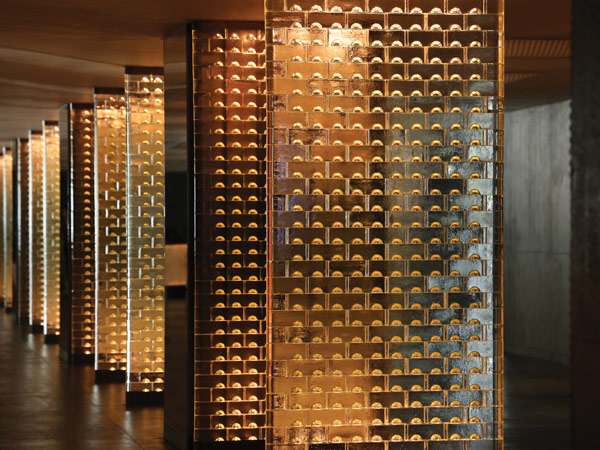
See the lobby’s majestic Golden Illusion installation. (Image: Courtesy Regent Hong Kong)
Your Hong Kong hit list
Ogle antiquities and intricately painted ceramics of bygone Chinese Dynasties at the jewellery-box-like Hong Kong Palace Museum, perched on the harbour. Joining the Palace Museum in the West Kowloon Cultural District is the modernist M+, dedicated to all forms of modern visual art, design and culture.

M+ museum forms part of the West Kowloon Cultural District. (Image: Kevin Mak)
Shop K11 Musea, a beacon of the haute and the hip in Victoria Dockside, is connected to Regent Hong Kong – so you can easily duck out for those last-minute Louboutins.
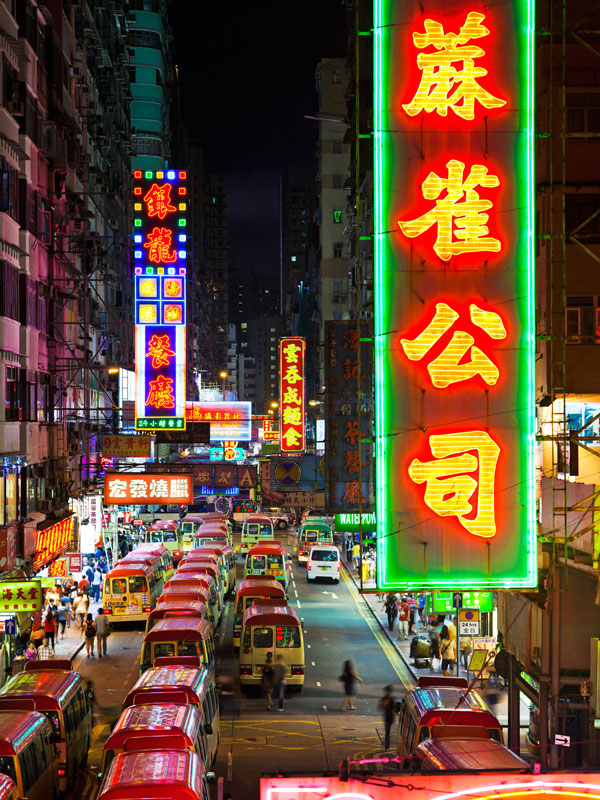
See the neon-lit maze of Mong Kok in Kowloon. (Image: Gavin Hellier)
Don’t pass on the Regent’s Lai Ching Heen. With its 40-year-long legacy as the top place for a special night out, the Michelin-starred Cantonese fine diner is a must.
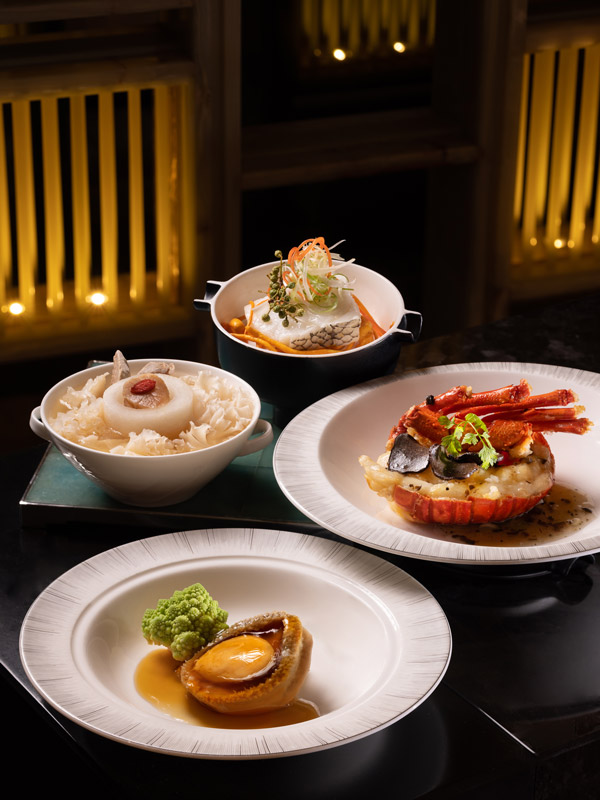
Expect elevated Cantonese cuisine at the Regent’s Michelin-starred Lai Ching Heen. (Image: Henrik Hui)
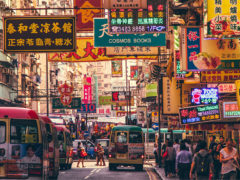

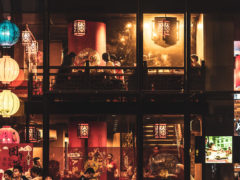

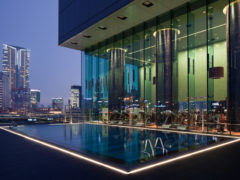
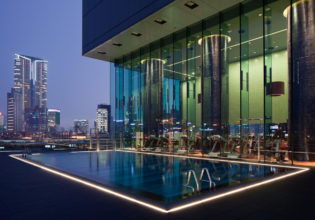
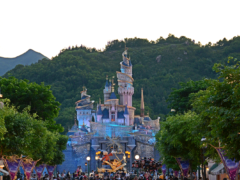


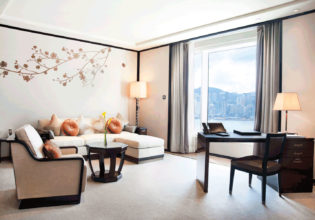
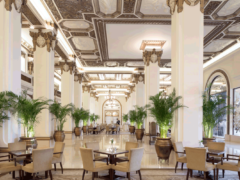



LEAVE YOUR COMMENT